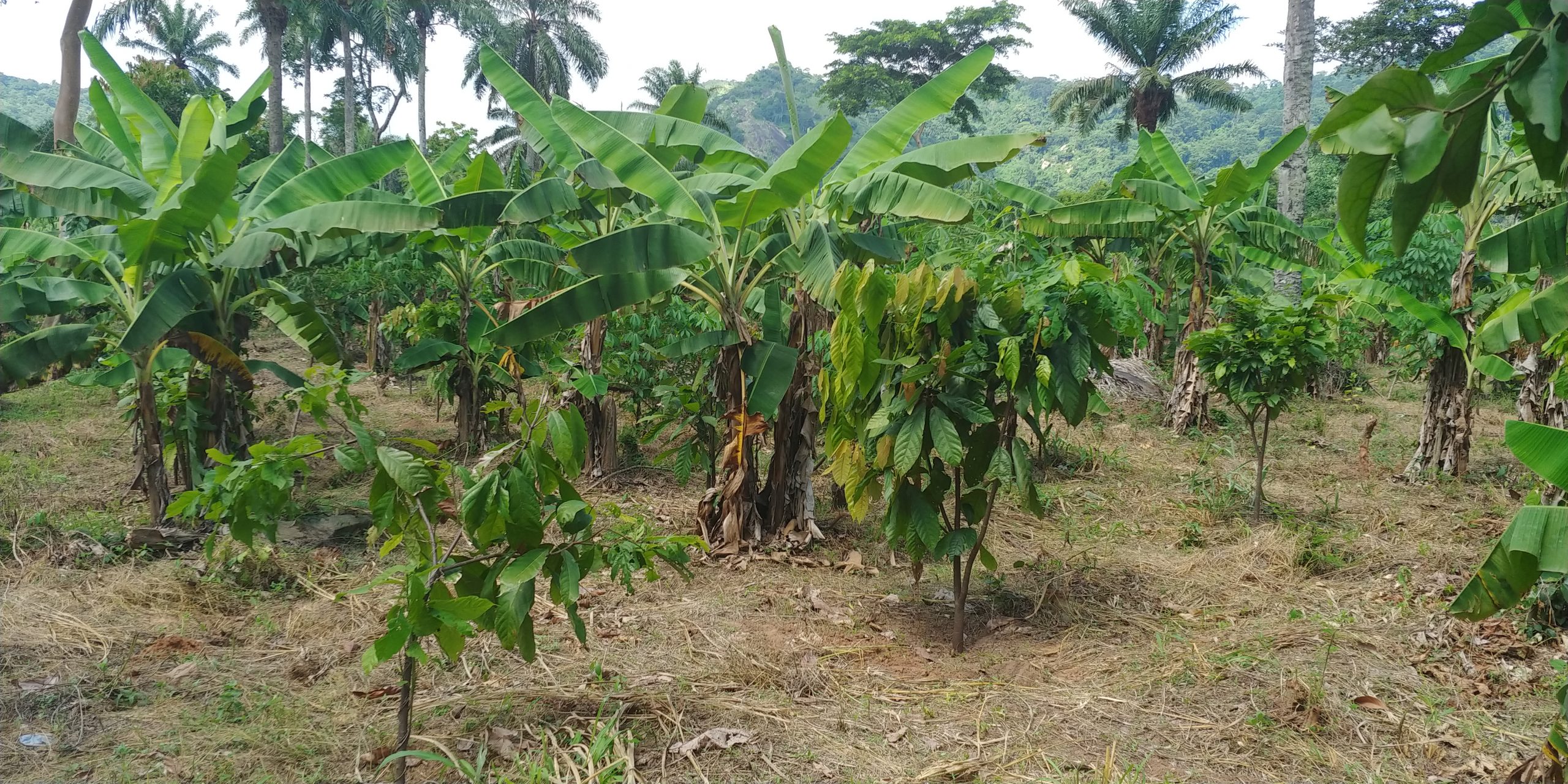Boosting commercialisation through the production of commercial tree crops in Nigeria

Written by: Adebayo B. Aromolaran & Abiodun E. Obayelu
Farming in Nigeria has been historically dominated by small-scale farms (SSFs). However, recent evidence suggests that medium-scale farmers (MSFs) are becoming increasingly prominent. One pathway for MSF growth in Nigeria has been identified as the expansion of land area under commercial tree crop plantations, such as cocoa, cashew, oil palm, kola nut, and coconut. However, very little is currently known about the factors that drive this expansion. Our recently published journal paper aimed to fill this gap.
What did we find?
Commercial tree crop plantations were found to be more common among MSFs than for SSFs, with 57 per cent and 25 per cent of MSFs and SSFs owning tree crop plantations, respectively. Commercial trees have become a major focus in Nigeria, as a way of increasing foreign exchange earnings from non-oil exports; increasing cultivation of these tree crops is therefore a core component of the government’s ‘Zero Oil Plan’ (ZOP). Consequently, encouraging expansion of the land area cultivated to tree crops, among both SSFs and MSFs, could become an important pathway for agricultural commercialisation and growth of non-oil export earnings for Nigeria.
Despite having been identified as a pathway towards commercialisation, expansion of commercial tree crop plantations is nevertheless hindered by weak land tenure security, and inadequate access to hired labour and agrochemical supplies. For example, only 0.7 per cent of SSFs and 5.7 per cent of MSFs have formal titles to their land. Our data also revealed that only 13 per cent of all sampled farm households had access to hired labour and 25 per cent to agro-service dealers. Our research revealed that poor yields, resulting partly from inadequate access to agrochemicals, discourage farmers from increasing their allocation of farmland to commercial tree crops.
Despite these challenges, both SSFs and MSFs often have room for expansion, if the production and marketing environment is enhanced by appropriate policies. The average SSF cultivates 56 per cent of the total land under their control (2.3ha), while the average MSF cultivates 63 per cent of their land (11.4ha).
Our results also show that among SSFs, years of education, access to all-weather roads and agro-dealer services, as well as improved land tenure security, were key factors that positively influence decision to allocate and/or expand land for tree crop production. These factors could therefore potentially increase the rate that SSFs transition into MSFs. For existing MSFs, higher levels of education, and increased access to land markets, agro-dealer services and large haulage vehicles for transportation of farm produce, were the most important factors driving the growth of commercial tree crop plantations.
Women and youths are less likely to allocate farmland to commercial trees crops, relative to arable crops. Women in many Nigerian communities are forbidden from owning land, and this automatically constrains them from planting tree crops, which occupy the land for more than 40 years. Youths on the other hand are less interested in cultivating commercial tree crops because of the long gestation periods of the crops, which means delayed returns unlike annual food crops, which provide a return within a year.
How can tree crop production be increased?
The transition of SSFs to MSFs, through the cultivation of tree crop plantations, can be facilitated by policies that would increase the security of land tenure, improve access to agro-dealer services, all-weather roads, and large haulage transportation facilities, and expand gender inclusion. Specifically, policies must be designed to:
1) Increase land tenure security, especially among SSF households, to enable them to increase investment in permanent crops like cocoa, cashew, kola nut, coconut and oil palm.
2) Increase access to agro-dealer services. Improving the distribution network of agro-chemical products, will enable farmers to obtain the recommended inputs for commercial trees, and encourage them to allocate more land to these crops.
3) Improve access to all-weather roads, to facilitate aggregation of farm produce, especially among SSFs, who are often widely scattered across very rural locations.
4) Encourage more women and youth to engage in commercial tree crop farming. Specifically, there needs to be changes in the cultural perception that women cannot inherit family land. Land markets also need to be well developed to allow woman and youth to be able to purchase land. Finally, because of the long delay before these crops begin to bring in reasonable returns, there is a need for programmes that will facilitate the access of women and youths to long-term credit facilities, specifically for tree crop production.
Authors information:
Adebayo B. Aromolaran is a Professor at the Department of Agricultural Economics, Adekunle Ajasin University, Akungba Akoko, Ondo State, Nigeria.
Abiodun Elijah Obayelu is an Associate Professor at the Department of Agricultural Economics & Farm Management, Federal University of Agriculture, Abeokuta, Ogun State, Nigeria.
